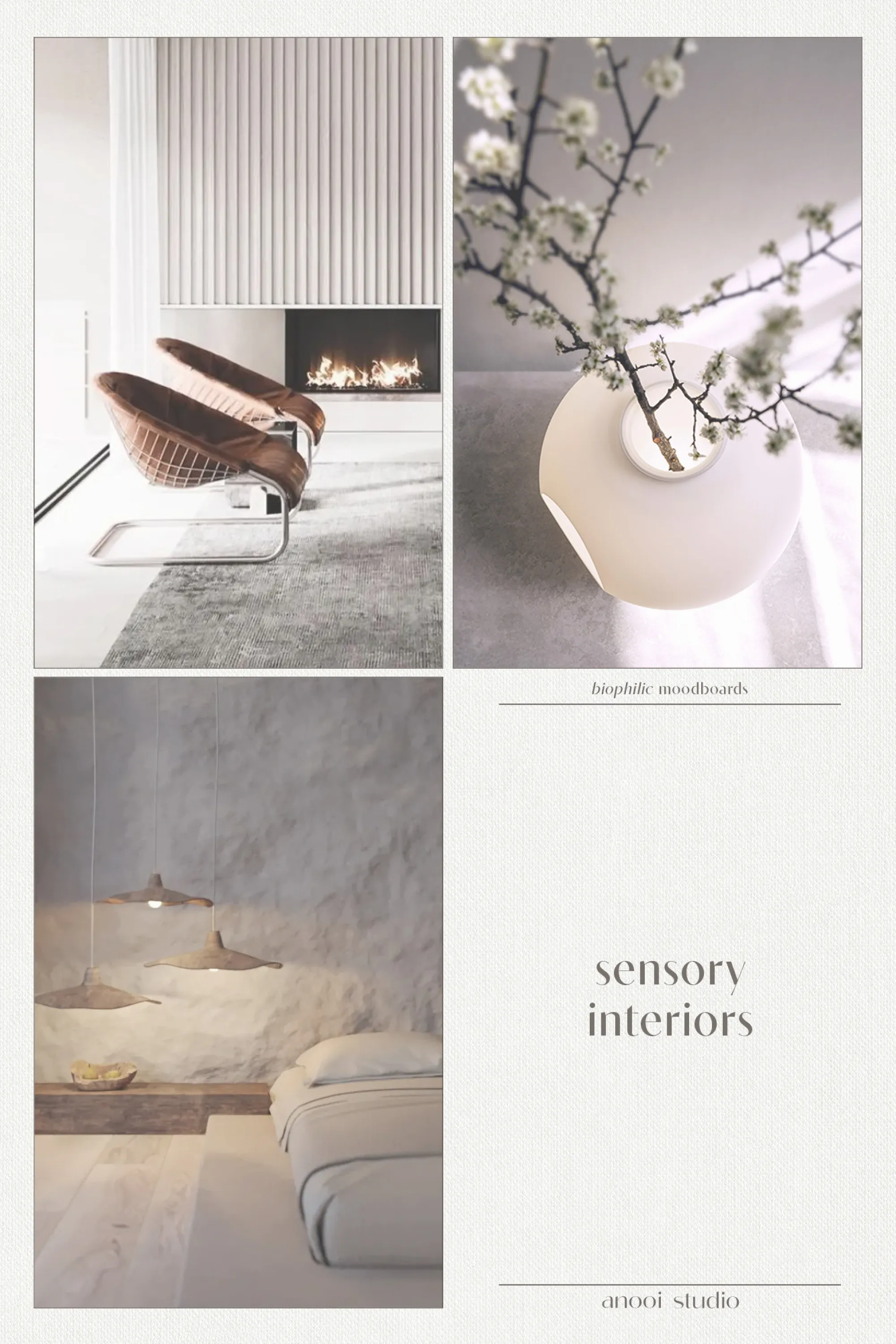Biophilic moodboards: designing interiors for all 5 senses
Designing spaces that engage all 5 senses lies at the heart of biophilic design. Sensory spaces are more interesting, and they contribute to bringing people closer to the natural world.
This episode of Biophilic Moodboards looks into non-visual connection with nature through sensory design features…

Sensory design and the experience of space
Interior design is often associated with how things look.
Sight is actually the main sense we humans use to navigate a space, yet the other senses shouldn’t be disregarded. It’s the 5 senses together that define how people feel in a space. An uncomfortable seat, a disturbing noise, a bad odour; these are all examples of non-visual clues that affect the perception of a space. On the flip side, a thoughtful design that incorporates positive non-visual elements will shape a rich and positively engaging experience of space…
Touch
Touch is the most ancestral sense and the first humans develop. As kids, touching things is a way to discover and understand the world. As adults, we keep touching things all the time, but we tend to give less relevance to what we feel.
Rich natural textures create a deep tactile experience in the space, one that makes people pause and consciously appreciate the experience of touch. Other biophilic features such as greenery and water can also become tactile features when designed to be touched instead of just looked at.

Hearing
The impact of sounds on human wellbeing is immense, and pleasant natural sounds have been shown to release stress and help concentration.
In the context of interiors, it’s the surroundings that largely dictate the soundscape of a space. Yet, nature sounds can be introduced by means of flowing water, a crackling fire, recordings, and more… Learning to notice the natural sounds that come from outdoors is also something to consider. For instance, rainy and windy days occur everywhere, but how often do we pause and listen to the sound of rain or the whisper of wind?


Smell
Smells can be relaxing or energizing, and they have the incredible power of bringing back memories of the past.
Fragrant plants and flowers are one way to introduce a pleasant smell element, as they bring their delicate scent into the space without being overpowering. Another source of naturally occurring perfumes is food, which introduces the topic of taste…

Taste
How does the sense of taste fit into interior design? Taste is the fundamental sense when it comes to eating and drinking, so it naturally belongs to the kitchen and dining area. Taste goes hand-in-hand with smell and sight, so it can be indirectly involved through the other senses as well.
Growing a herb garden in the kitchen is an example, that will provide fresh cooking ingredients as a plus. Food can also double as a decorative element, adding colour, texture as well as a reference to taste.


Interiors that stimulate the 5 senses feel naturally more interesting and invite people to experience the space at a deeper level, shaping a nourishing experience.
Further resources:
Available in the shop, anooi’s publications explore the nuances of a biophilic ethos, highlight anooi’s perspective on the topic, and cover the studio’s ongoing research in biophilic thinking and design.